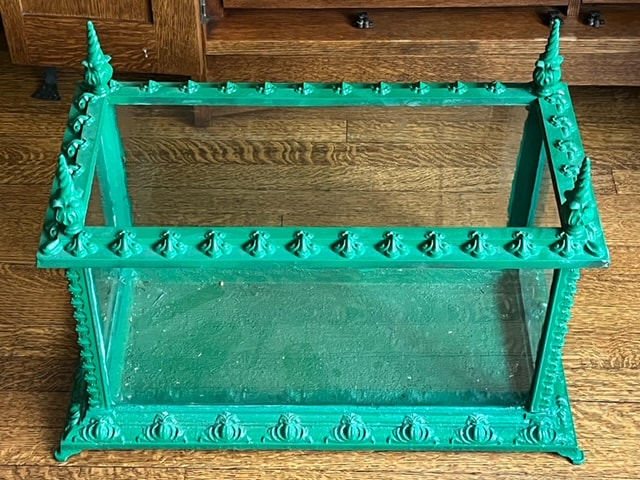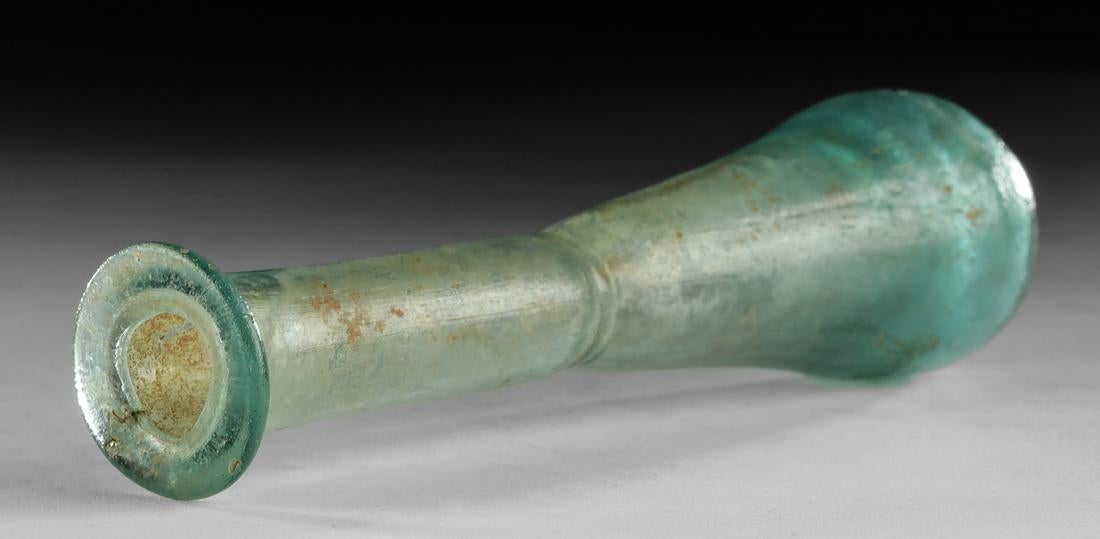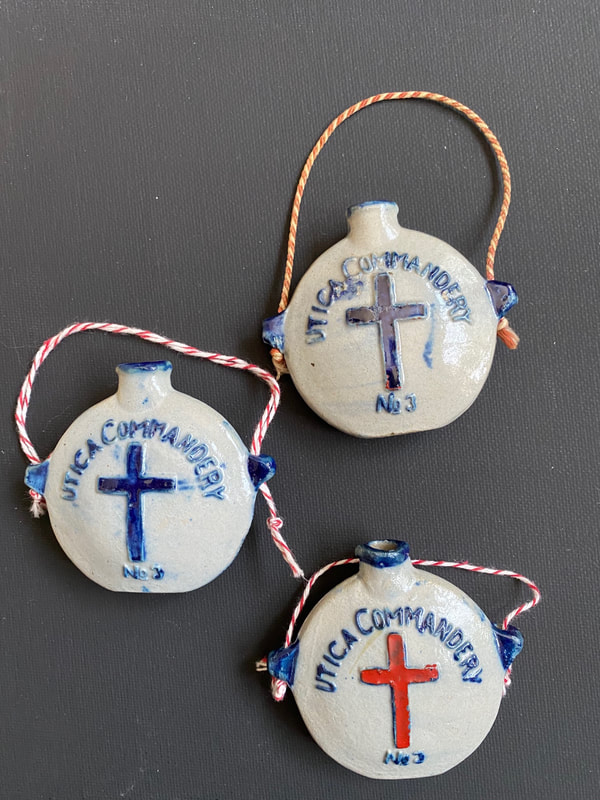
RARE MATTHEW BRADY STUDIO CARTE DE VISITE, CIRCA 1864 OF FREDERIC EDWIN CHURCH (AMERICAN 1826-1900), . THIS CARTE DE VISITE IS AN ORIGINAL, RARE MATTHEW BRADY ALBUMEN SILVER PRINT MEASURING 2 15/16 X 1 13/16 INCHES (7.5 CM X 4.6 CM), ON THE ORIGINAL, UNTRIMMED MOUNT. IN PENCIL ON THE VERSO, IT READS: CHURCH, ARTIST. THE IMAGE ITSELF IS SIGNED IN THE PHOTOGRAPH: BRADY/N.Y. THE CONDITION IS ABSOLUTELY SUPERB FOR THE TIME PERIOD AND THE PIECE IS ORIGINAL, UNTRIMMED AND GUARANTEED TO BE AS DESCRIBED. Price: $425.00.

J.W. Fiske Iron Works, late 19th century Cast-Iron Aquarium. 25.50 x 14 x 18 inches. Fully restored and repainted. Quite rare and desirable, I originally purchased this in 1992, 30 years ago from a private collector. It was in original condition, missing glass and with the patina of surface rust and traces of the original paint. It was a slightly darker green. Would also make a great terrarium. Price: $1,950.00.

Eastern Roman Unguentarium, Imperial period (likely from Syria), 1st-3rd century CE. 1.2 x 5 inches. Beautifully crafted holding vessel or Unguentarium. Free blown from sea colored, blue-green glass. Smooth pontil scar beneath a drop-form body, corseted neck line with cylindrical neck above and an in-folded disc rim. Interior areas of silvery iridescence have formed which add to the beauty of this early piece. Old paper label on base. Provenance: Ex. coll. Lyle Dees, Topeka, Kansas, (acquired ca. 1950-70).

Roman Glass Flask, Imperial period, circa 1st-3rd century CE. 1.9 x 4.6 inches. An elegant form of free blown, translucent glass of a sage green hue. Petite base with rough pontil mark, beneath an ovoid body, rounded shoulder and cylindrical neck and in-folded disc-shaped rim. Silver and rainbow iridescence inside the body add to the beauty and charm of this rare piece. Provenance: Davis collection, Houston, Texas.

A Rare, early American Thumbprint Punch bowl on a high standard. Mid-19th century, Bakewell, Pears & Co, Pittsburgh, Pa., with 32 even scallops around the rim, above seven rows of graduated thumbprints on the bowl, wafer construction. Atop a raised double step hollow stem with 12 flutes; circular foot with 24 even scallops. 12 1/2 inches (diameter of bowl); 12 1/2 inches (height); 7 1/2 diameter of foot.
Weighing in at more than 10 pounds, this rare punch bowl is one of only a couple of known examples, one of which resides in the collection of the Metropolitan Museum of Art, and another at the Corning Museum. This is the largest size of the punchbowl and is a grandaddy of Early American Glass.
Reference: Lee/EAPG, pl. 59. illustrates a smaller example, text page 183, "The large covered compotes and the punch bowls are among the most interesting specimens of American glass, and are so gorgeous in appearance as to justify their being classed as veritable museum pieces." Price on Request.







